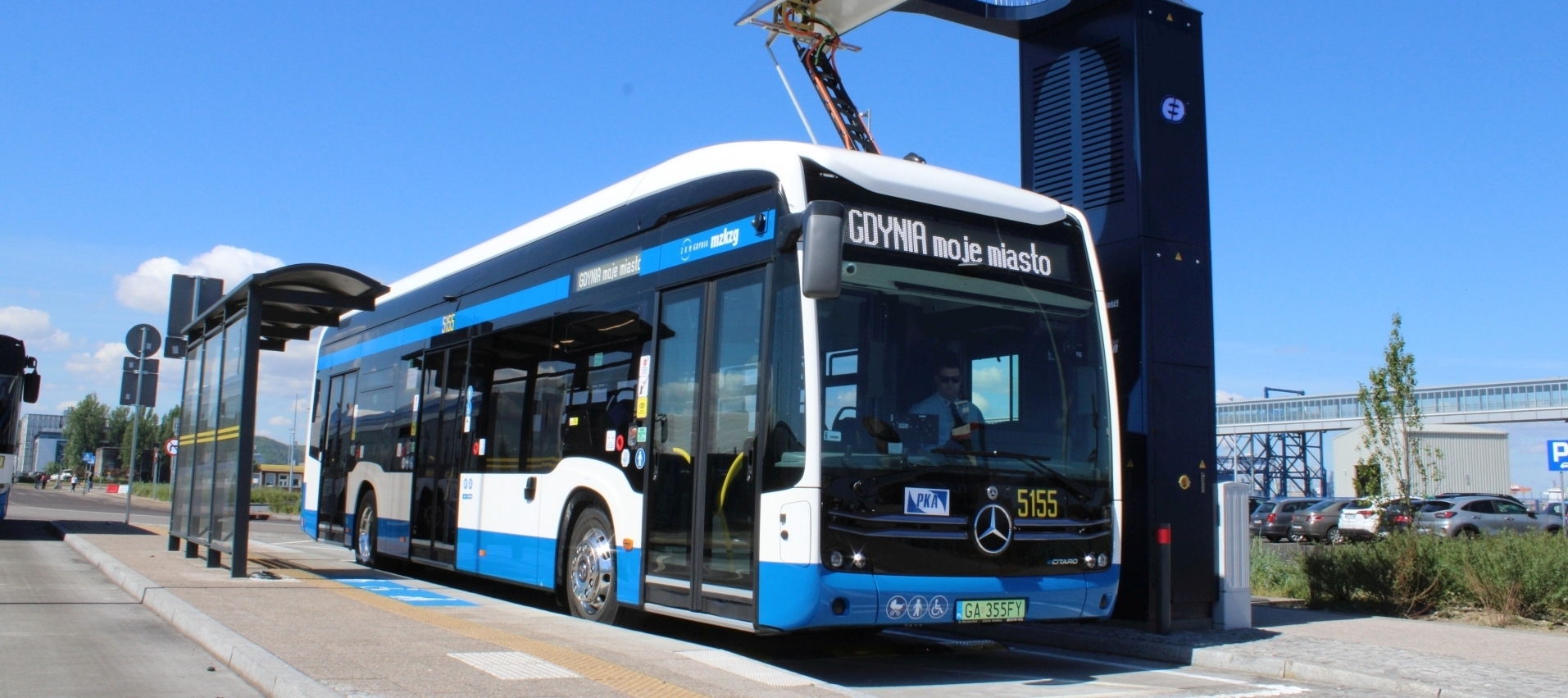An interesting example of such a model is an assessment method to simulate circular scenarios for electrification upscaling along an identified e-corridor in the city of Gdynia (the north of Poland), developed jointly in Interreg CE4CE project by its project partners: Kruch Railway Innovations, University of Gdansk and PKA Gdynia (Gdynia bus and e-bus transport operator).
After mapping the processes and collecting data from electric buses and chargers the so-called digital twin for the city of Gdynia has been modelled. Based on simulation and by analysing real-life data (e.g. sensor data, energy consumption, charging performance, energy flows of a selected public transport corridor), various scenarios for further public transport electrification possible to be taken up in the city can be precisely developed.
The simulation is thus set up and can simulate different overhead contact line (OCL) settings, in-motion charging trolleybus (IMC), opportunity charging and overnight charging in all scenarios. Hence, the model conveniently allows to develop several scenarios for different options of the transport modes (IMC trolleybus, e-bus, mixed operations). Moreover, thanks to the model it is now also possible to optimally plan e.g. the most predestined location of e-bus chargers, photovoltaics infrastructure or to precisely determine the demand for electricity and anticipated energy consumption and its consequent costs. Thus, the model perfectly assists planning how and in what direction electric transport in Gdynia should be developed in the light of a circular economy, resources saving approach.
The simulation of circular scenarios for electrification in Gdynia also includes delivery optimisation of already existing fast-charging, trolleybus infrastructure in different parts of the city (e.g. by sharing the trolleybus grid for other public transport modes).
All in all, the digital twin can serve as a great starting point for a complex and precise cost-benefit analysis for integrated public transport electrification.
In its final phase, based on peer-review and user-feedback, the simulation digital twin is to be transferred to a universal, handy and useful circular business planning tool for electrified public transport fleets and infrastructure.
